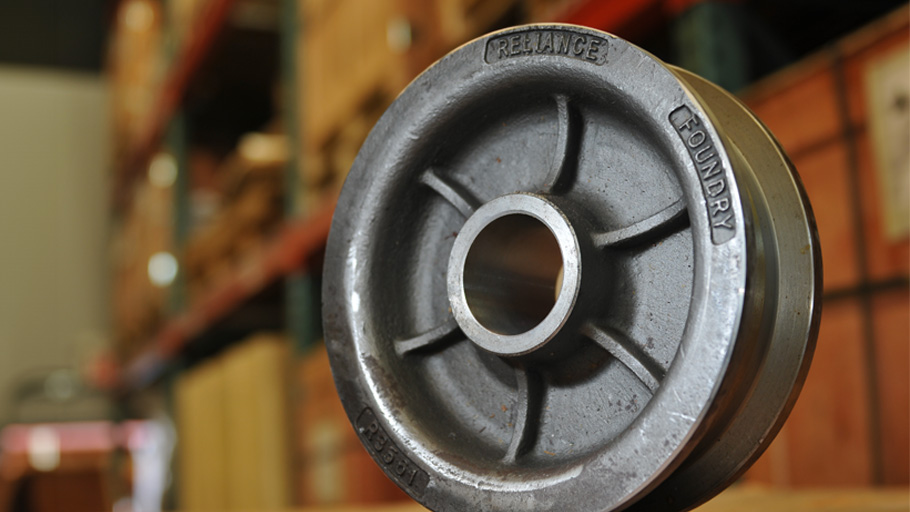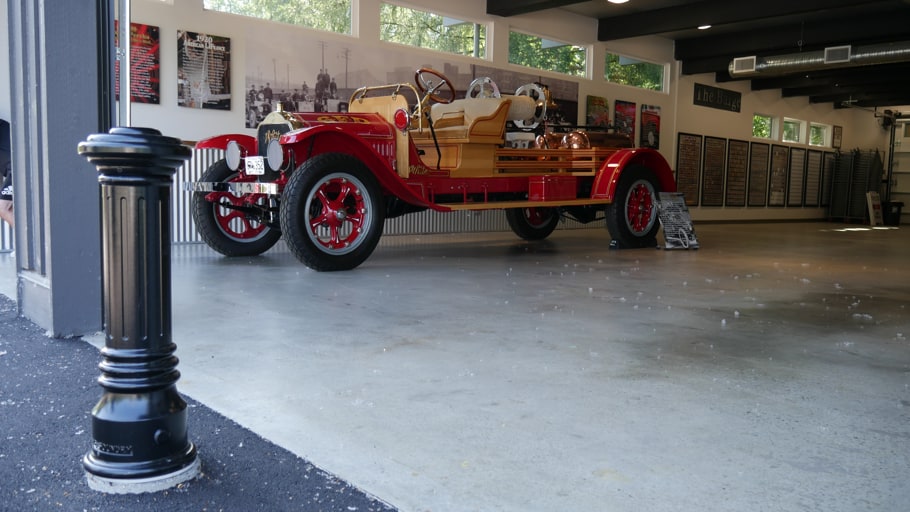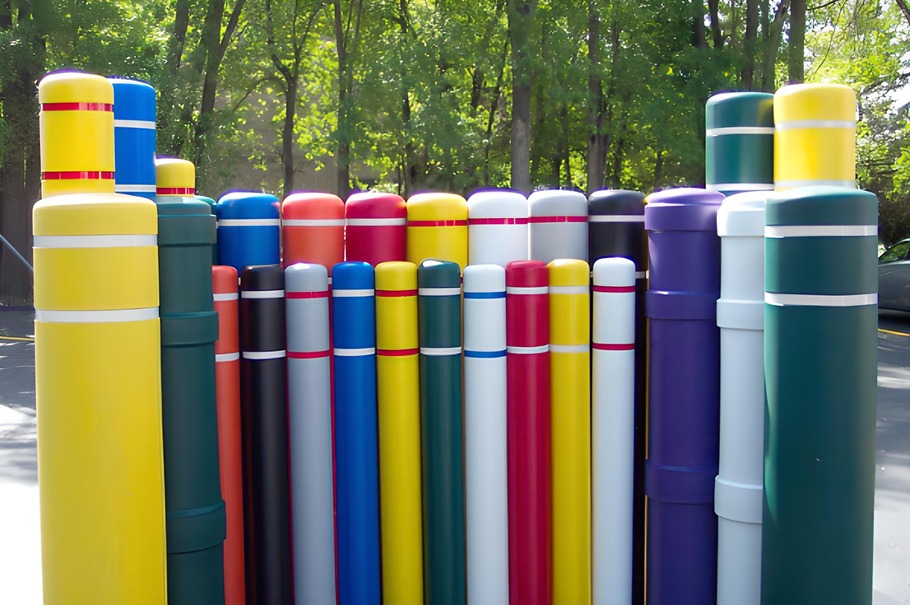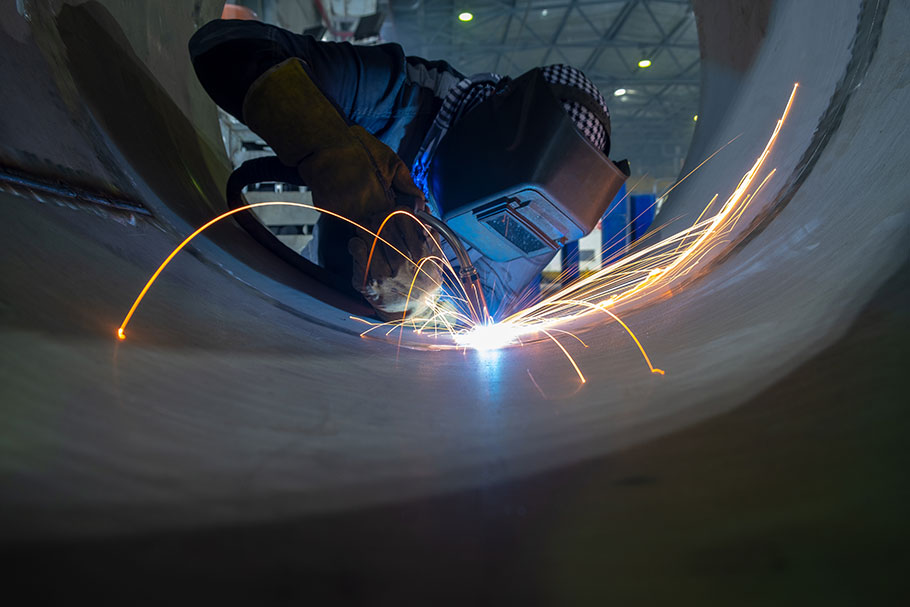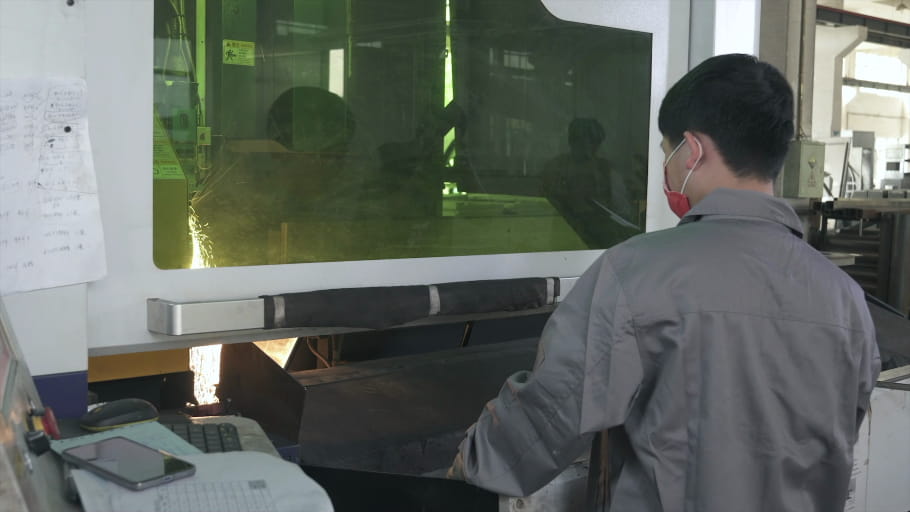What’s the difference between cast iron and cast steel?
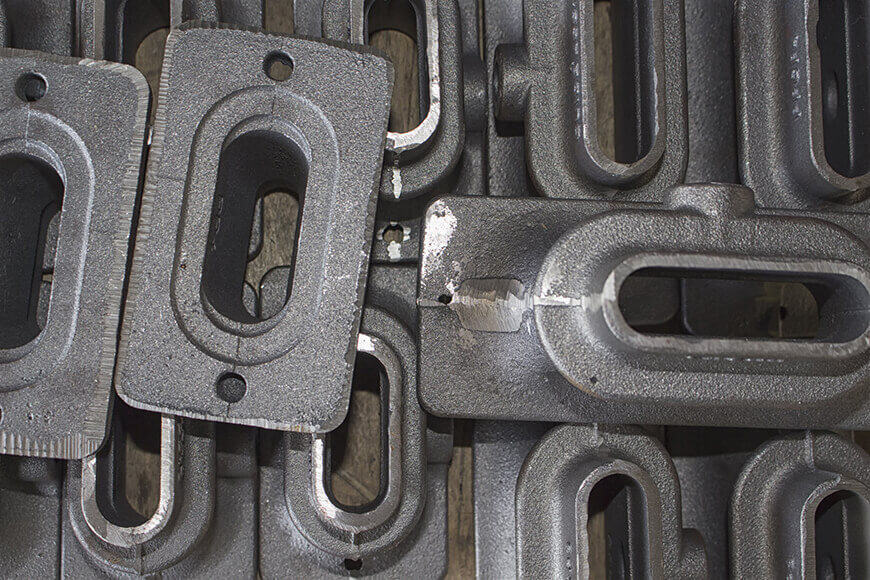
Casting offers exceptional capacity for design detail, often eliminating the need for additional fabrication and assembly. Many materials can be cast, including several types of metals and synthetics, but iron and steel in particular feature excellent mechanical properties for a wide range of applications.
While cast iron and steel may appear similar on the surface, they each have distinct advantages and disadvantages from production to application. Understanding these advantages and disadvantages and choosing appropriately can mean the difference between unforgiving strength and durability and fractured or deformed parts that will quickly lose their luster.
Carbon content is the main difference
Iron and steel are both ferrous metals comprised primarily of iron atoms. In manufacturing, however, it’s not that simple—there are many different alloys and grades used in production. To understand them, it’s important to distinguish between the iron used in everyday products, and the scientific element iron (Fe). The elemental iron is the stuff that’s found in nature, typically in an oxidized form that requires intensive processing called smelting to extract.
Pure elemental iron is too soft to be useful in most applications. It gets harder, and therefore more useful, when it’s alloyed, or mixed, with carbon. In fact, carbon composition is the main distinction between cast iron and steel. Cast iron typically contains more than 2 percent carbon, while cast steel often contains between 0.1–0.5 percent carbon.
Characteristics
The following table provides a general overview of the qualities of each material. While there are many different types of iron and steel to consider, this table focuses on grey iron, cast iron, and carbon steel.
Castability
Most people haven’t encountered iron or steel in their molten state—which is understandable, since iron melts at about 2300˚F and steel melts at 2600˚F, and both are poured into molds at even hotter temperatures. People who do work with liquid iron and steel quickly discover that they differ dramatically in pourability and shrinkage rates.
Cast iron is relatively easy to cast, as it pours easily and doesn’t shrink as much as steel. This means it will readily fill the complex voids in a mold and requires less molten material to do so. This flowability makes cast iron an ideal metal for architectural or ornate ironwork structures such as fencing and benches.
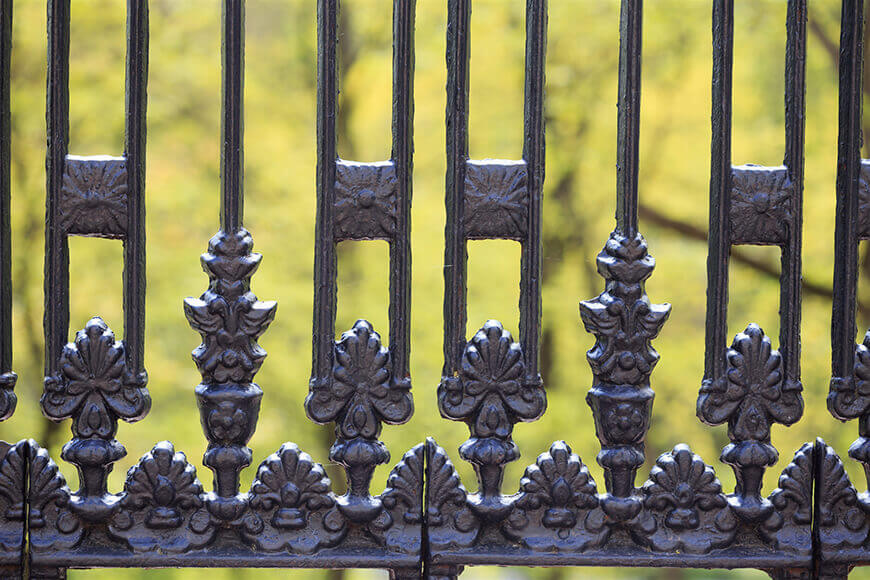
Pouring steel is much more difficult. It is less fluid than molten iron, and more reactive to mold materials. It also shrinks more when it cools, meaning more molten material needs to be poured—typically into an excess reservoir, called a riser, which a casting draws from as it cools.
Castings, however, typically don’t cool uniformly throughout their internal structures. Outer areas and thinner portions will cool and shrink at different rates than inner areas and bulkier portions—often creating internal tension, or stress, that can only be alleviated through heat treatment. Steel is much more susceptible than iron to shrink stresses, and in some situations, these tensions can lead to significant internal and/or external voids, and possible eventual fractures.
For these reasons, cast steel requires more attention and inspection throughout the casting process, making production more resource intensive.
Machinability
Depending on the final application, cast parts may need to be machined to achieve specific tolerances, or to create a desired finish. At a minimum, objects such as gates and runners need to be cut away and ground down.
Strength without ductility means a material will be very brittle and susceptible to fracture
Machinability is the measure of how easy a given material is to cut or grind; some materials are more difficult to machine than others. As a rule of thumb, metals with high alloy additions to improve mechanical performance have lower machinability.
Cast iron is typically much easier to machine than steel. The graphite structure in cast iron breaks away more easily, and in a more uniform manner. Harder irons, such as white iron, are much more difficult to machine due to their brittleness.
Steel isn’t as easy to cut with the same consistency, and it causes more tool wear, resulting in higher production costs. Hardened steels, or those with higher carbon content, also increase tool wear. Softer steel isn’t necessarily any better, however—low-carbon steels, despite being softer, can get gummy and difficult to work with.
Vibration damping
Damping properties should be considered when selecting a casting material, as a lack of damping ability can lead to excess vibration and noise, such as ringing or squealing. Depending on where a material is used, effective damping can result in sturdier, more reliable performance.
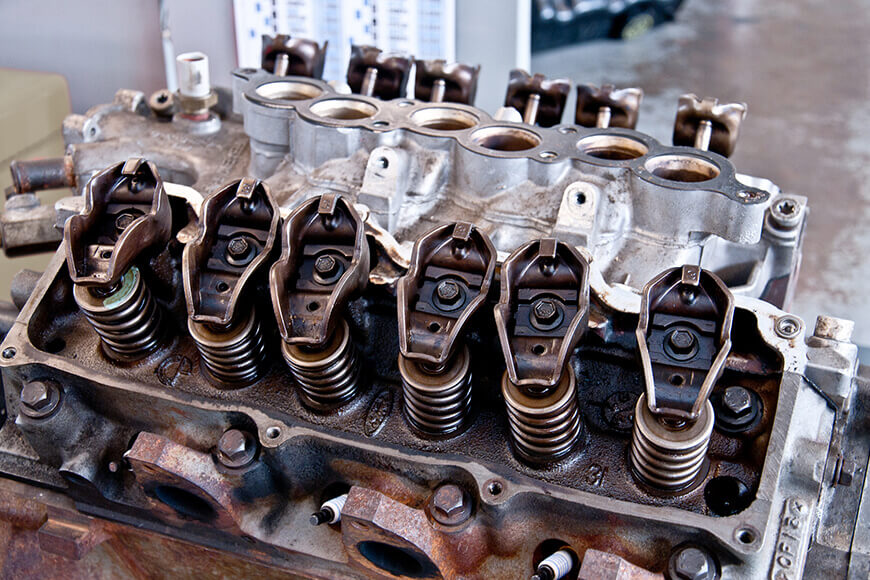
The graphite structures in cast iron, especially the flaked formations in gray cast iron, are especially good for absorbing vibration. This makes cast iron ideal for engine blocks, cylinder housings, and machine beds, and other applications where sturdiness and precision are important. Reducing vibration can minimize stress and prevent wear on moving parts.
Compressive strength
Compressive strength is the ability of a material to withstand forces that would reduce the object’s size. This is opposite to forces directed at pulling a material apart. Compressive strength is beneficial in mechanical applications where pressure and containment are factors. Typically, cast iron has better compressive strength than steel.
Impact resistance
So far, it might seem that there are more advantages to using cast iron than steel, but steel has one significant advantage: impact resistance. Steel is excellent at withstanding sudden impacts without bending, deforming, or breaking. This is due to its toughness: its ability to withstand high stress and strain forces.
Strength without ductility results in a brittle material that is highly susceptible to fracture—and cast iron is the poster child for strength without ductility. Because of its brittleness, cast iron has a limited range of application.
At the same time, high ductility, or the ability to deform without failure, isn’t much use without the strength to withstand significant impact. A rubber band, for example, can go through significant deformation without breaking, but the amount of force it can take is very limited.
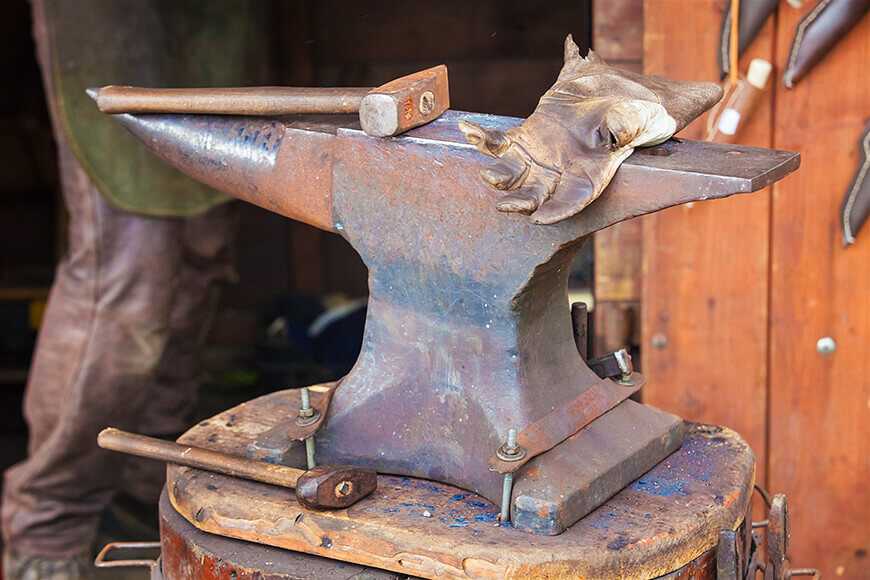
While iron may be easier to work with in most casting applications, steel has an optimal mix of both strength and ductility for many applications, and cast steel is extremely tough. The impact-resistant qualities and all-around load-bearing nature of steel make it desirable for many mechanical and structural applications—that’s why steel is the most widely used metal in the world.
Corrosion Resistance
Iron has better corrosion resistance than steel. Both metals oxidize in the presence of moisture, but iron develops a patina to prevent deep corrosion of the metal’s integrity.
Another way to prevent corrosion is with paint or powder coating, or IronArmor for added protection. Any chip or crack that exposes the underlying metal can will result in corrosion, so regular maintenance is important for coated metals.
If corrosion resistance while maintaining a silver-toned raw metal look is an important factor, alloy steels are likely a better option—specifically stainless steels, which have chromium and other alloys added to prevent oxidation.
Wear resistance
Cast iron typically has better resistance to mechanical wear than steel, especially in friction-wearing situations. A certain amount of graphite content in the cast iron matrix creates a graphitic dry lubricant that allows solid surfaces to slide against each other without deteriorating surface quality, making it more difficult to wear.
Steel wears more readily than iron but may still be resistant to certain types of abrasion. Certain alloy additions can also improve the abrasion qualities of steel.
Cost
Cast iron is often cheaper than cast steel because of the lower material costs, energy, and labor required to produce a final product. Raw steel is costlier to purchase, and it requires more time and attention to cast. When designing cast products, however, it is worth considering long-term use and replacement costs. Parts that are more expensive to manufacture can end up costing less in the long run.
Steel is also available in many prefabricated forms—such as sheets, rods, bars, tubes, and beams—and can often be machined or assembled to suit a particular application. Depending on the product, and quantity required, fabricating existing steel products may be a cost-effective option.
Different types of cast iron and cast steel
We’ve compared the qualities of the most basic forms of cast iron (gray iron) and cast steel (mild or carbon steel), but the specific composition and phase structure of iron and steel can greatly affect mechanical properties. For example, the carbon in a standard gray iron takes the form of sharp graphite flakes, while ductile iron features more spheroidal graphite structures. Flaked graphite is what makes gray iron brittle, while the round graphite particles in ductile iron improve toughness—making it more suitable for impact-resistance applications.
Alloys can be added to both iron and steel to engineer desired properties. Manganese, for example, increases toughness, while chromium improves corrosion resistance. Varying carbon content is also what distinguishes between low-, standard- and high-carbon steels—higher amounts making for much harder materials.
Ultimately, the choice between cast iron and cast steel will depend on the type and application of the final installation.
For more information on iron or steel, or to request a quote for a custom project, please contact us.
Sources
- American Foundry Society. “Machining Cast Iron Components“. afsinc.org
- American Foundry Society. “Understanding Material Specifications for Steel Castings“. afsinc.org
- Machine Design. “Cast Iron“. machinedesign.com
- Nickel Institute. “Cast Irons & Cast Alloys“. nickelinstitute.org
- Hosford, William F. Iron and Steel. Cambridge University Press. 2012.
- Woodford, Chris. “Iron and steel“. explainthatstuff.com


